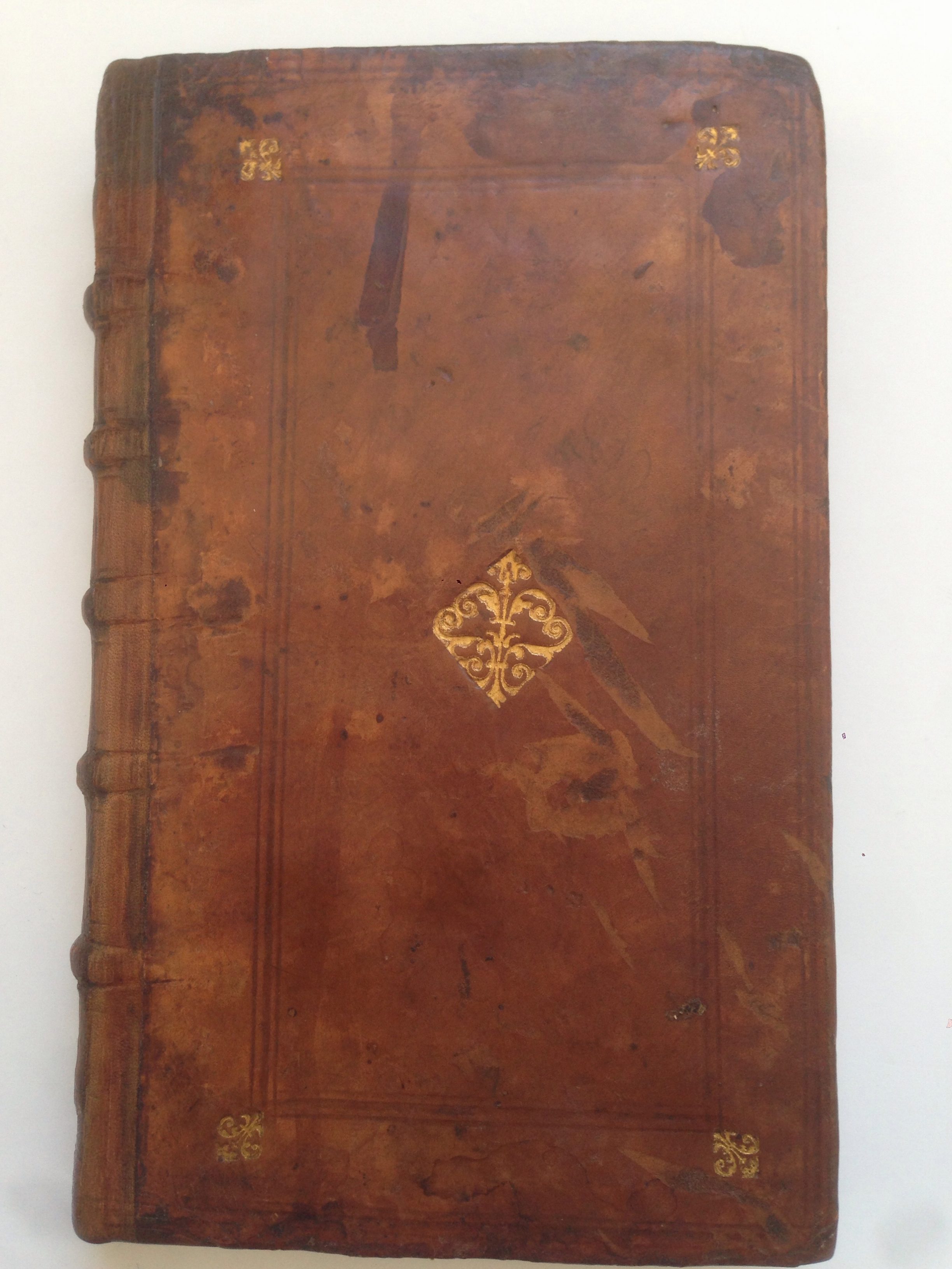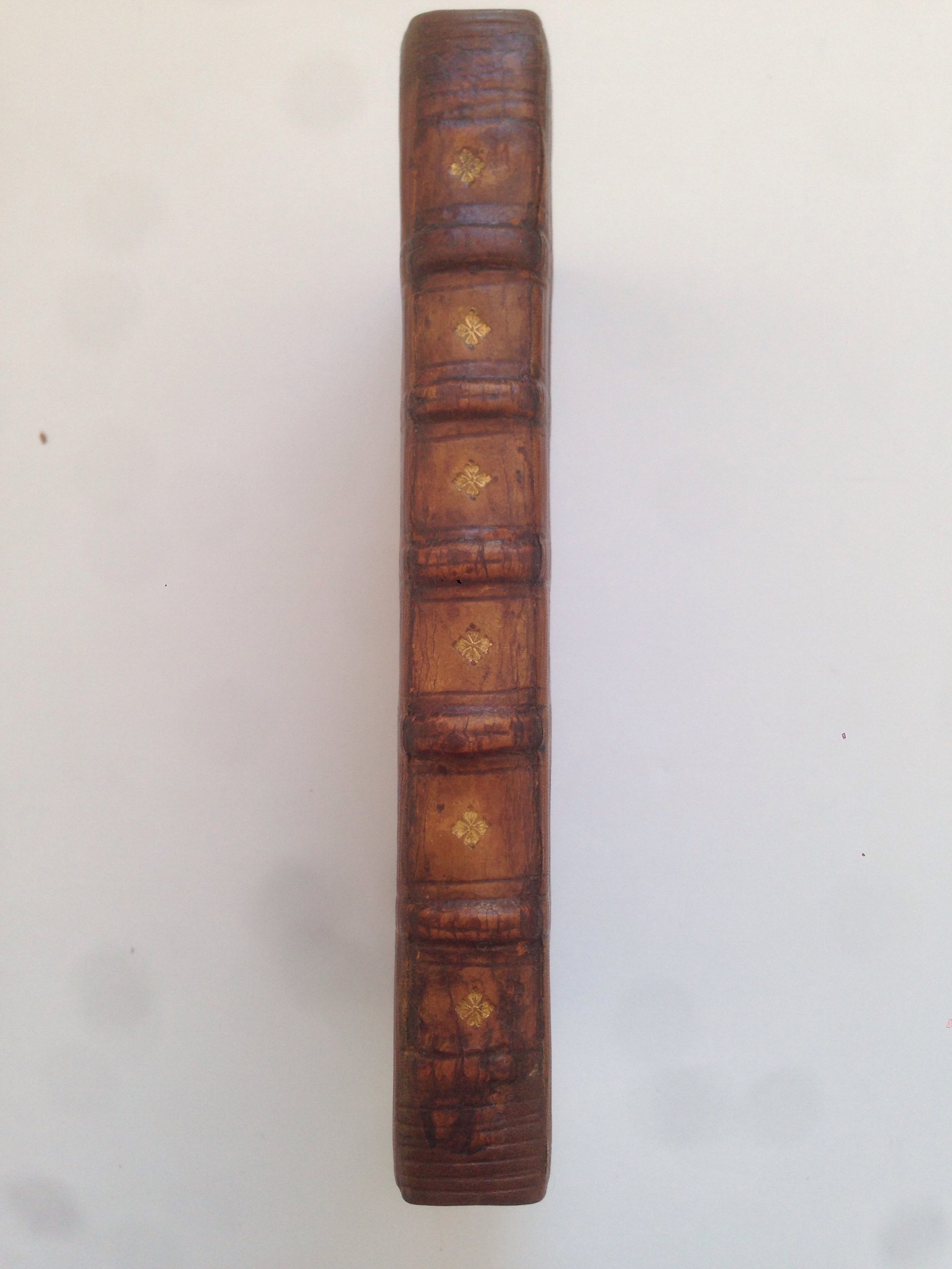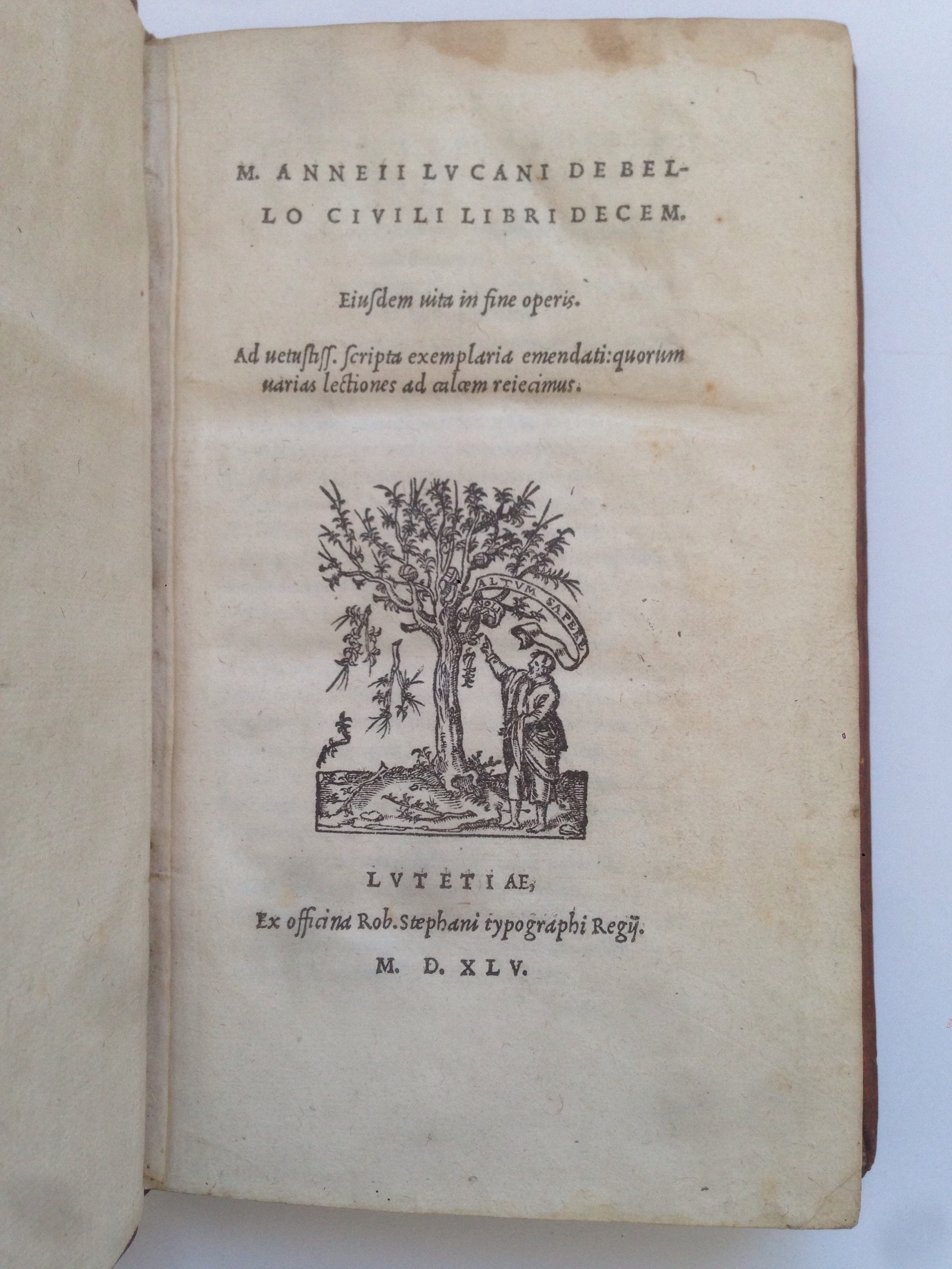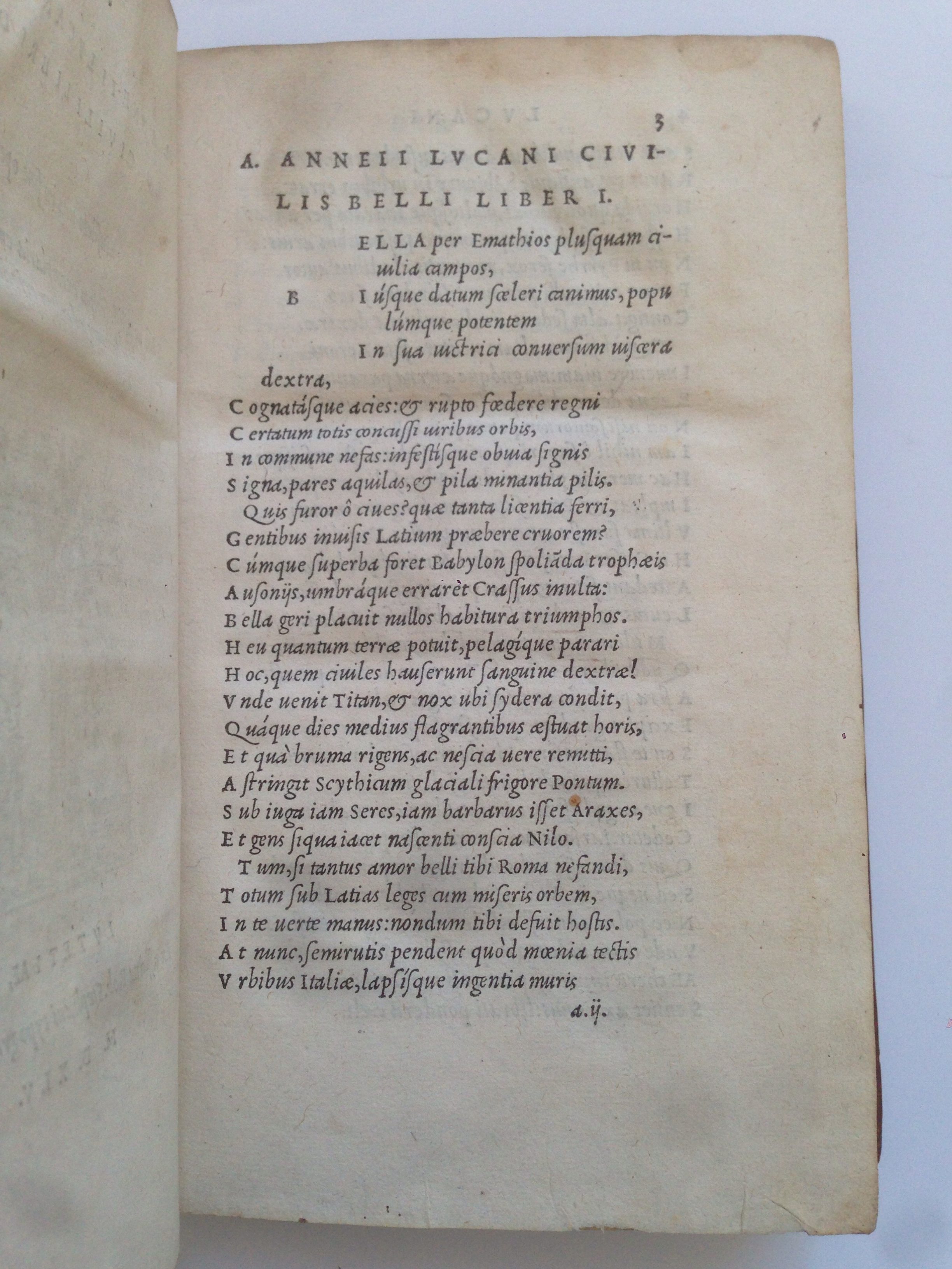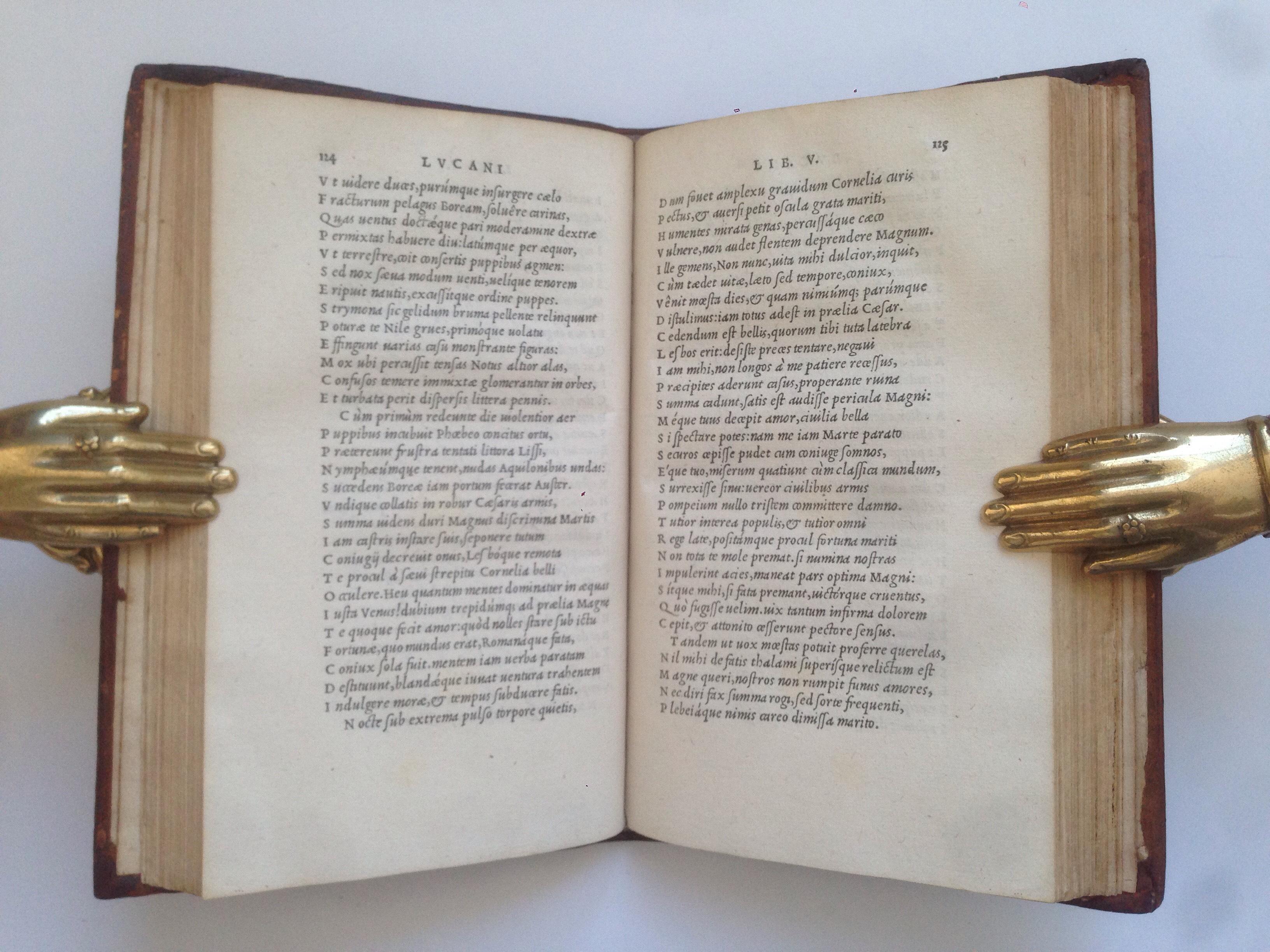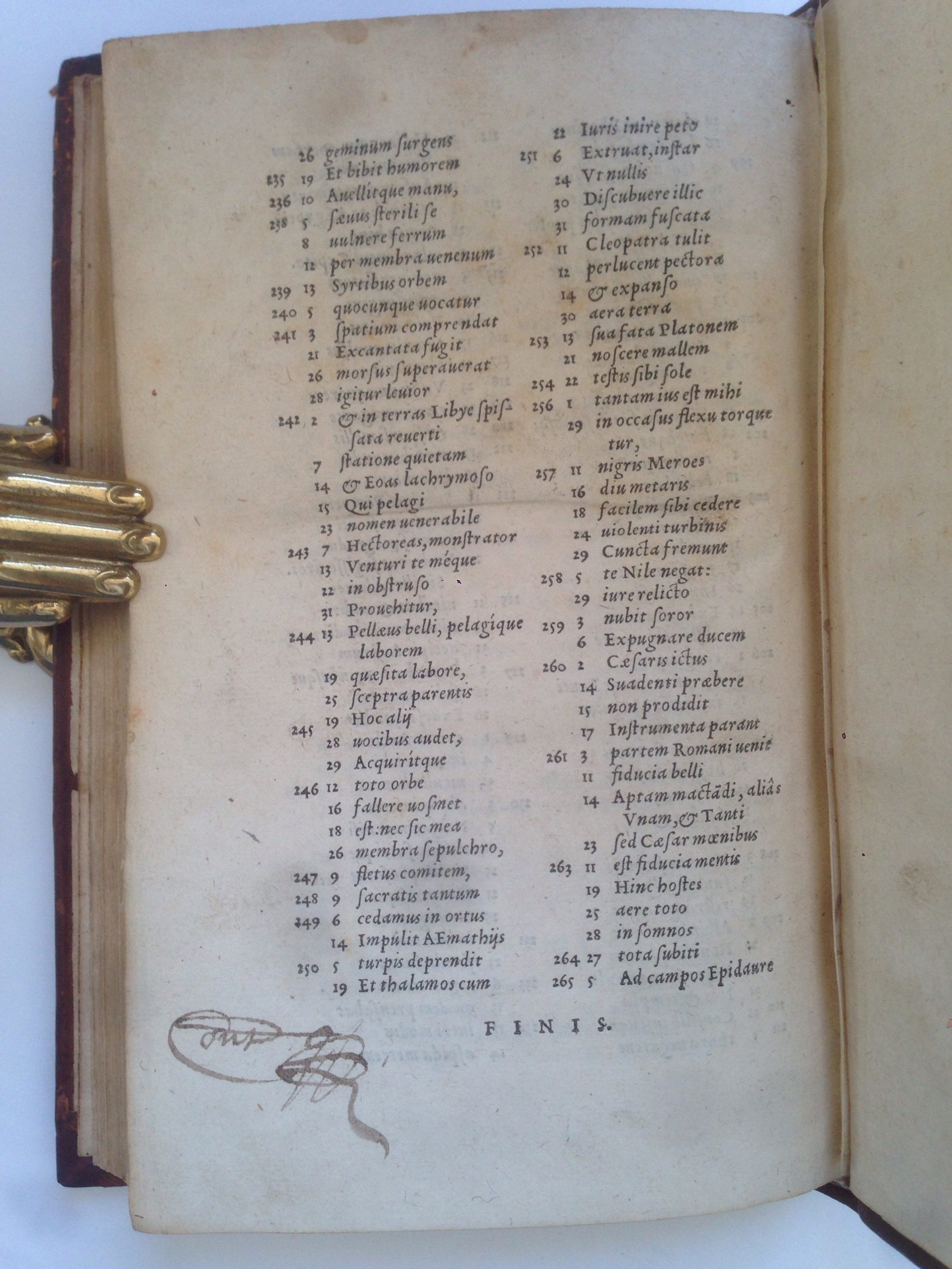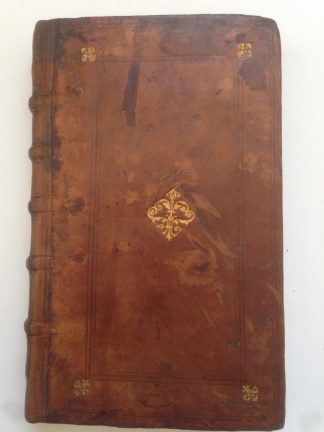LUCAN, M. Anneus
De bello civili libri decem. Eiusdem vita in fine operis
Paris, ex officina Rob. Stephani typographii Regii, 1545£1,950.00
8vo. pp. 273 [vii]. a-r8, s4. Italic letter, headlines in Roman. Estienne’s woodcut ‘Noli Altum Sapere’ device on title-page, capital spaces with guide letters, contemporary inscription of ‘Franciscus de Saunoys’ on front pastedown, ‘Cont’ mss. with monogram after colophon, C20 bookplate of Margaret Flower on pastedown, a few neat contemporary underlinings and marginal annotations towards beginning. Light age-yellowing, tiny worm trail to top of extreme inner margin on last few quires, very light waterstain to outer and upper margins of first few leaves. A very good copy, crisp and clean, with good margins in contemporary French polished calf, covers triple blind ruled to a panel design, gilt fleurs-de-lys at outer corners, central gilt lozenge, spine with blind ruled raised bands, in six compartments with small gilt fleuron at centres, C16 vellum ms. stub, joints, head and tail of spine and corners very expertly restored covers a little stained and scratched.
The beautifully printed first Estienne edition of Lucan’s Pharsalia, his epic poem on the Civil War between Pompey and Caesar, printed in the exceptional Garamond italic, which was then still innovative, having first appeared only in 1543. Claude Garamond’s italic type was designed for Robert Estienne in imitation of the Aldine italic, which it surpassed in beauty and readability. Although Robert Estienne was made Royal printer in Greek in 1539 he continued to produce many ‘pocket’ editions of the Latin classics of this kind and they came to form the backbone of his printing practice. “The actual texts of the Latin classics, on the other hand, were now much more prominent in his lists. It was during this period (1539 -1550) that he published two complete sets of the works of Cicero, as well as a considerable number of separate works. … The years 1544-5 produced Juvenal and Persius, Lucan and Horace in the same ‘pocket’ form..” Elizabeth Armstrong. ‘Robert Estienne, Royal Printer.’
Lucan’s account of the Civil Wars between Caesar and Pompey was considered in the Middle Ages superior to Virgil (a view held later by Shelley and Southey). The poem was begun around 61 AD and several books were in circulation before the Emperor Nero and Lucan had a bitter falling out. Lucan continued to work on the epic, despite Nero’s prohibition against any publication of Lucan’s poetry, and it was left unfinished when Lucan was compelled to commit suicide as part of the Pisonian conspiracy in 65 AD. A total of ten books were written and all survive; the tenth book breaks off abruptly with Caesar in Egypt. Events throughout the poem are described in terms of insanity and sacrilege. Most of the main characters are terribly flawed and unattractive; Caesar is cruel and vindictive, while Pompey is ineffective and uninspiring. Far from glorious, the battle scenes are portraits of bloody horror, where nature is ravaged to build terrible siege engines and wild animals tear mercilessly at the flesh of the dead
Lucan’s continued place in contemporary reading is well-evidenced by the many fine editions printed after the Aldine editio princeps, of which this is a good example. The author was to have an important influence in the next century on Corneille, and thus classical French drama.
In stock


